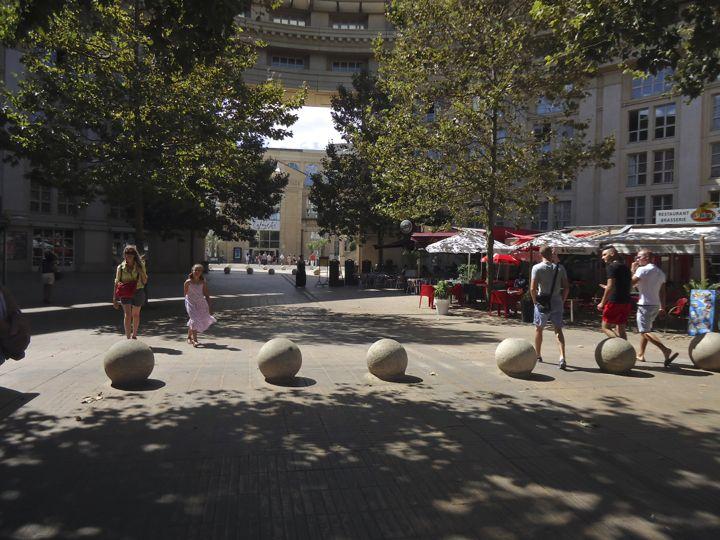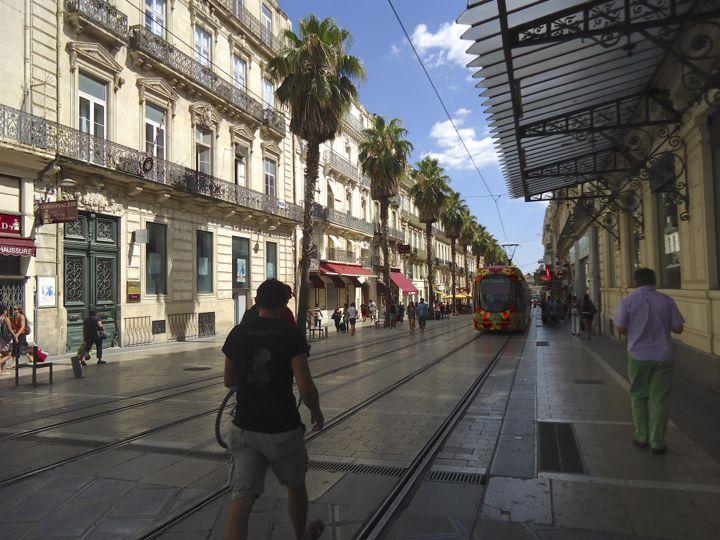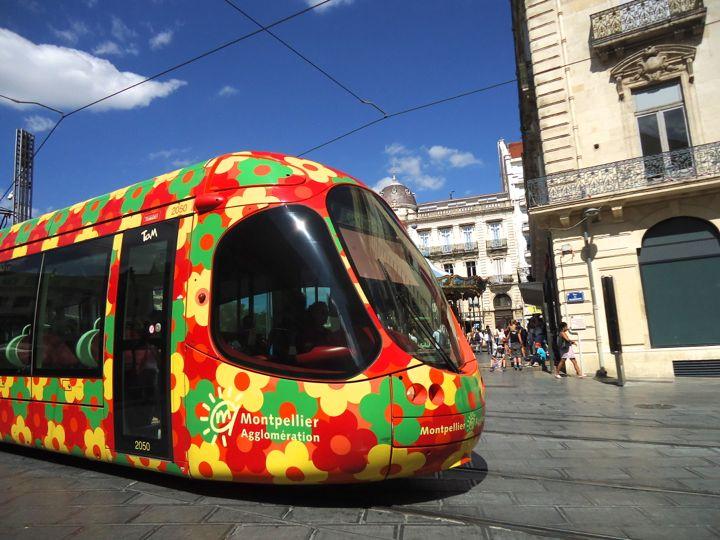Urbanisme Montpellierique
Montpellier, the capital of Languedoc-Rouisson, is France's 8th largest city, with 19th-century boulevards lined with palm trees and the streets of its old town largely turned over to pedestrians. Although it was in economic shambles following WWII—lacking jobs and industry—the city has been turned around due to a continuing urban planning program that has made it the country's fastest growing as well as its youngest city.
The foundation for this renaissance lies in the city’s historic origins. Home to the first medical
school in the world, founded in the 12th century, it’s university, opened a century later, was also the first. During the 17th century, Louis XIV made Montpellier
a free trade zone, increasing its prosperity and importance on the continent.
If you enter the city from the east, this history unfolds at Porte de Peyrou, a triumphal arch
honoring the Sun King, with a broad open plaza that covers the city’s reservoir, fed by water brought from the nearby river Lez by a massive aqueduct. It immediately becomes apparent
that this is a town that has always done things on a grand scale.

During the
1980s, Montpellier’s boundaries were expanded with a new residential area called Antigone [below], built on land acquired from the French Army adjacent to Place de
la Comédie, the main square. Designed by the Spanish architect Ricardo Bofill, the structures of Antigone feature neo-classical motifs enlarged to massive proportions in the
post-Modern style, with broad car-less boulevards furnished with distinctive benches, plantings and bollards. When this area first opened, much of the public was outraged by the controversial design.
Since then, the plantings have matured to screen the towering buildings in a way that Bonfill surely must have imagined.
One of the elements that makes Montpellier a vibrant yet seemingly carefree city is its
tram system. Four lines currently link the periphery to the downtown, with connecting bus service to both the airport and the nearby Mediterranean beaches. But unlike the British public transit
system, which punishes people for bringing cars into London, Montpellier rewards drivers by giving them a free ride on the tram when they park on the outskirts. Each line features the design of both
the cars and the station graphics by a single artist. Line 3, which I took last week, was envisioned by fashion designer Christian Lacroix who also designed the cars and livery for
SNCF’s TGV. The tram shown below was designed by Mattia Bonetti. Photos: Peggy Roalf



